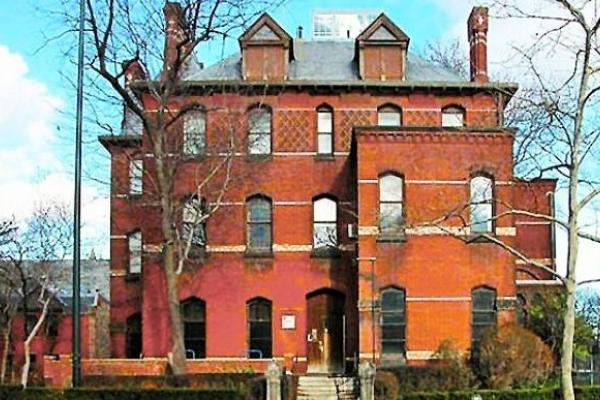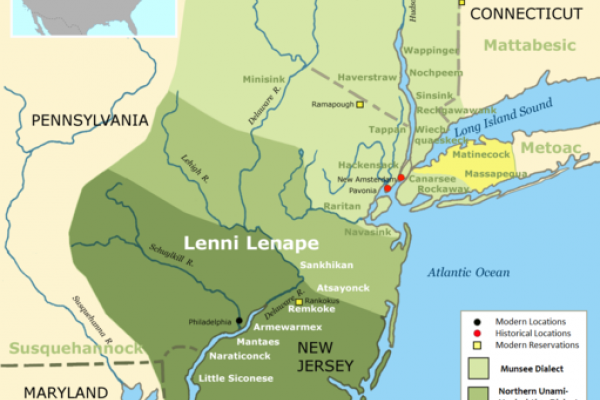Advanced Search
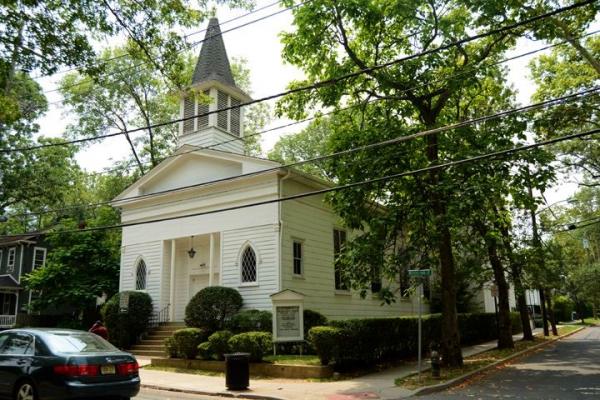
From 1880–1901, Paul Robeson’s father, William Drew Robeson, was pastor of the all-black Witherspoon Street Presbyterian Church in Princeton, New Jersey, spiritually a Jim Crow town formed by an all-white university. (In 1846, whites in the First Presbyterian Church forced their black members to form their own church.) Judged insufficiently servile by Witherspoon’s white sponsors, Rev. Robeson was forced to resign his pastorate in 1901.
This Second Empire twin, designed by Samuel Sloan, dates to ca. 1870. It was acquired by the Penn trustees in the 1960s, was home to Theta Zi fraternity for 40 years, and is the current home of Penn’s Women’s Center, with an address at 3643 Locust Walk.
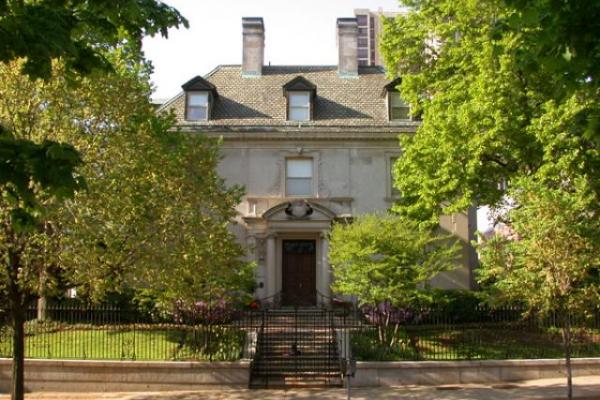
Built in 1910–11 by the cigar manufacturer Otto Eisenlohr, located next door to the property of Samuel Fels’s mansion, the Eisenlohr mansion was acquired by the Penn trustees in 1939, and since the early 1980s has served as the President’s House.
The soap manufacturer Samuel S. Fels built this Colonial Revival house on the southeast corner of 39th & Walnut streets, on a property formerly owned by Anthony J. Drexel Sr. The house was acquired by the Penn trustees in 1950, and today is home to the Fels Institute of Government.
Joseph Potts either built or acquired the carriage house in the rear of 3905 Spruce St. It was passed on to International House, as shown in this vintage photo.

The Pennsylvania Hospital for the Insane opened in 1841 under the progressive superintendency of Thomas Story Kirkbride, who oversaw its expansion and the construction of a formidable building complex in the late 1850s that stands to this day in the service of psychiatric care.

Erected in 2003, this state historic marker stands in Clark Park on the south side of Baltimore Avenue between 43rd & 44th Streets.
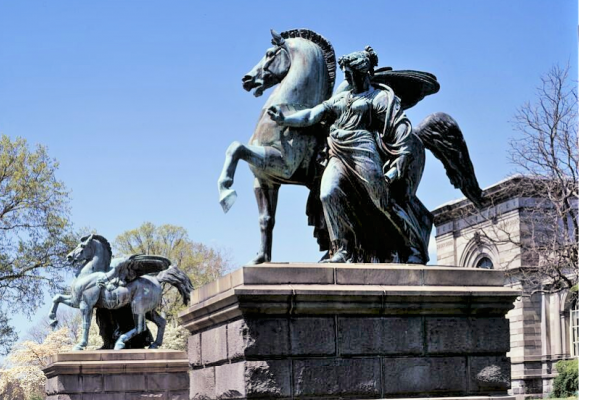
These twin statues of the “Winged Pegasus,” cast in bronze by Vincent Pilz, have framed the entrance to Memorial Hall for nearly 150 years.

Architectural plan for University City High School, with a three-year construction timeline.

